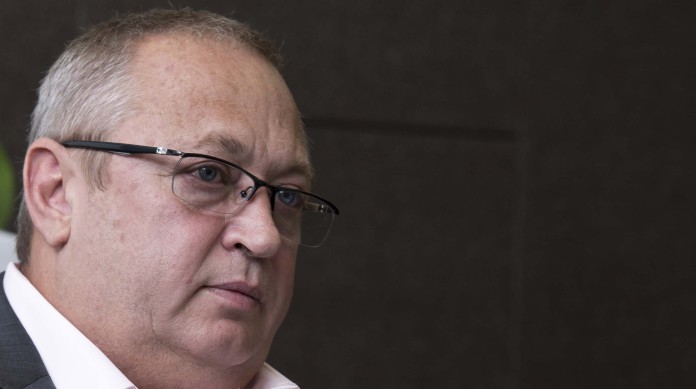
SIBANYE Gold CEO, Neal Froneman, could hardly conceal his frustration with the performance of the firm’s share price which at the time of the firm’s annual figures presentation in February, had halved in value. It has since fallen 58% in 12 months and has a current market capitalisation of R22.2bn.
Froneman’s beef with the share price is that it should have performed better on a relative basis to its peer group which includes AngloGold Ashanti, currently valued at R52.3bn.
“Our dividend is bigger than Anglogold [Ashanti] which has a R62bn market cap,” said Froneman in an interview with Miningmx on Feburary 23. “I understand we are in a rights issue period where we’ve got an overhang, but post the rights issue, I would expect very significant uptick in our share price,” he said.
The rights issue, in which some $1.3bn will be raised – R17.3bn – is to pay for the firm’s takeover of Stillwater, a large US-based platinum and palladium firm. The deal is expected to win shareholder approval around April.
Sibanye had also taken the effort of briefing several of its shareholders about the deal, including the Public Investment Corporation, and found them to be supportive.
Yet Froneman still used a considerable part of the firm’s year-end results presentation going through the basics of the deal as if to court favour of his strategic plan. “The market has not understood the true value of Stillwater,” he said. “This is a low cost producer which will establish us as one of the top three platinum and palladium producers in the lowest cost quartile,” he said.
The criticism of analysts, though, is that Sibanye didn’t turn to further consolidation in the South African platinum sector first, choosing instead to focus its attention on Montana where Stillwater is located. “We know Stillwater doesn’t have synergies in that way,” replied Froneman. “That’s not the deal we wanted to do.”
In any event, Sibanye is purporting to already have identified a fourth deal in the platinum sector which will make it a mine-to-market integrated platinum group metal producer the details of which Froneman was reluctant to discuss.
“What’s the fourth deal?” an analyst asked.
“I can’t tell you what I was referring to, but we’ve got a fourth step in the strategy,” he said. “Once the balance sheet is in a position there is a fourth step that will take us from mine to market in South Africa. Will it happen in two or even nine months? I don’t know,” he said, adding that were this deal to be consummated, Sibanye would be constrained to do any more platinum deals owing to competition issues.
The first two steps in the strategy were the purchase of Rustenburg Platinum Mines from Anglo American Platinum for about R4.5bn base case and the R4bn capture of Aquarius Platinum.
The view of analysts is that Stillwater is such a game-changer that it’s hard to get visibility of Sibanye until the dust has settled. The rights issue is expected to take place in the third quarter. At the same time, there’s questions of how Sibanye will tackle its capital expenditure challenges given a decline in the rand gold price which is pressuring the balance sheet.
“We like Sibanye’s investment case, but near term, shares could be volatile as valuation may be capped by the overhang of the potential upcoming rights issue,” said UBS analyst Danielle Chigumira in a note.
Said Goldman Sachs: “The pending Stillwater deal is likely to raise sustainability issues around the dividend”. Froneman insists, however, the dividend isn’t going away although he did acknowledge investors were worried about the capital growth versus yield dilemma that is at the heart of Sibanye currently.
“One view is that we are giving with one hand and taking back with another hand,” he said referring to the notion that Sibanye will keep up the dividend yet still ask for shareholders to engage in heavy capital raising.
“It is the same pool of money, but two separate things,” said Froneman. “One issue is how to fund the balance sheet; the other is how to run the company. We have established a track-record for paying dividends but it is also very important to certain shareholders that we show discipline and maturity and show that the company is well run,” he added.
Stillwater was actually cash flow negative in its 2016 financial year generating -$10m free cash flow compared to an inflow of $3m in the previous year. This was largely down to a 29% year-on-year decline in net cash generated from operations. The company’s net cash position also fell 14% year-on-year to $175m.
“That wasn’t a surprise for us,” said Froneman. “We knew it was coming because Stillwater was developing some high grade stopes,” he added. “The value of Stillwater increases substantially as Blitz comes on line,” he said. Froneman is referring to an expansionary project that will take production from Stillwater to over 800,000 oz of platinum and palladium, an increase of up to 320,000 oz/year.









